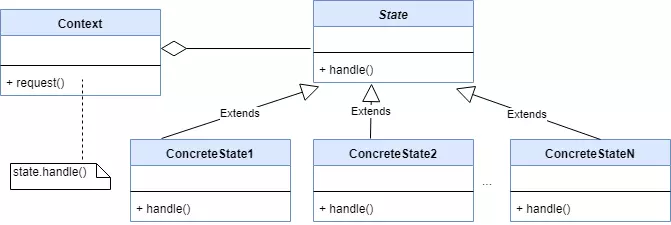
Design patterns are proven solutions to software design problems. They help improve code quality, promote reusability, and increase maintainability. We use them to save time and produce quality, extensible and flexible code. In this article, we are going to introduce the State design pattern.
The State design pattern is a behavioral pattern that allows an object to change its behavior as needed. This pattern helps to separate the behavior of an object from its state and provides a possibility to switch between different states dynamically.
The State design pattern typically consists of three main components:

Below is an example of the implementation of the State design pattern in C#:
// Define the State interface
public interface IState
{
void Handle();
}
// Define Concrete State classes
public class ConcreteStateA : IState
{
public void Handle()
{
Console.WriteLine("State A is handling the request.");
}
}
public class ConcreteStateB : IState
{
public void Handle()
{
Console.WriteLine("State B is handling the request.");
}
}
// Define the Context class
public class Context
{
private IState state;
public Context(IState state)
{
this.state = state;
}
public void ChangeState(IState state)
{
this.state = state;
}
public void Request()
{
state.Handle();
}
}
// Usage
var context = new Context(new ConcreteStateA());
context.Request(); // Output: "State A is handling the request."
context.ChangeState(new ConcreteStateB());
context.Request(); // Output: "State B is handling the request."In the example above, we have defined the State interface and two Concrete State classes (ConcreteStateA and ConcreteStateB) that implement the State interface. We also have a Context class that holds an instance of State as the state of context. The Request method in the Context class selects commands related to a specific situation. By changing the State instance defined in the Context, the behavior of the Request method will change.
The State design pattern is a useful pattern when the behavior of an object needs to change dynamically based on needs. This feature helps encapsulate the behavior of an object and provides a flexible way to switch between different states at runtime.
To read about other design patterns, you can use the list below. There is also a code repository on GitHub that includes all the design patterns.

I am Reza Babakhani, a software developer. Here I write my experiences, opinions and suggestions about technology. I hope that what I write is useful for you.
leave a comment